Explorer’s Choice World Oceans Month Digital E-Cards
Happy World Oceans Month!
Help us spread the love for our ocean with these free downloadable digital e-cards featuring some of your favorite photos from NOAA Ship Okeanos Explorer expeditions.
The Results Are In
After six weeks of sharing photos representing different types of discoveries made during Okeanos Explorer expeditions, we have tallied the results of our Explorer’s Choice Photo Contest. A big thank you to everyone who voted, encouraged others to vote, and helped make this contest a success! We’re excited to share the winners with you here and hope you will share them even further.
Throughout June, join us and share these cards widely on social media and through emails to your friends and family to help get the word out about the importance and wonder of our ocean. #WorldOceansDay #WorldOceansMonth #OceanMonth2020 #Okeanos
World Oceans Day is June 8, 2020.
E-CARDs
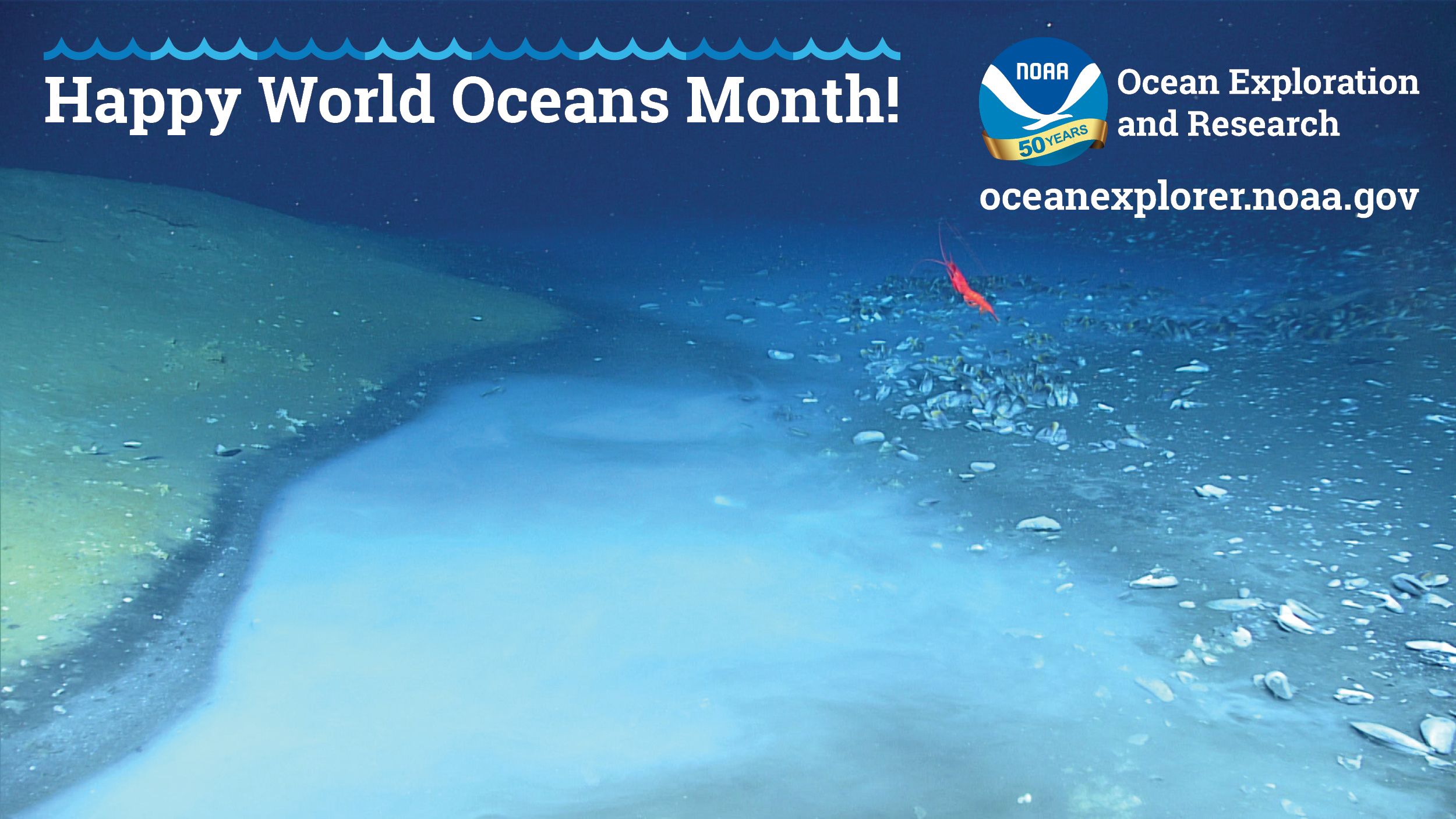
Geology of the Deep: Brine Pool
Essentially an underwater lake, this brine pool was discovered during the Gulf of Mexico 2017 expedition. Brine is denser than surrounding seawater because it contains more salt. Thus, it flows along the seafloor, often collecting in massive pools. Image courtesy of the NOAA Office of Ocean Exploration and Research. Download the card (jpg, 1.7 MB).
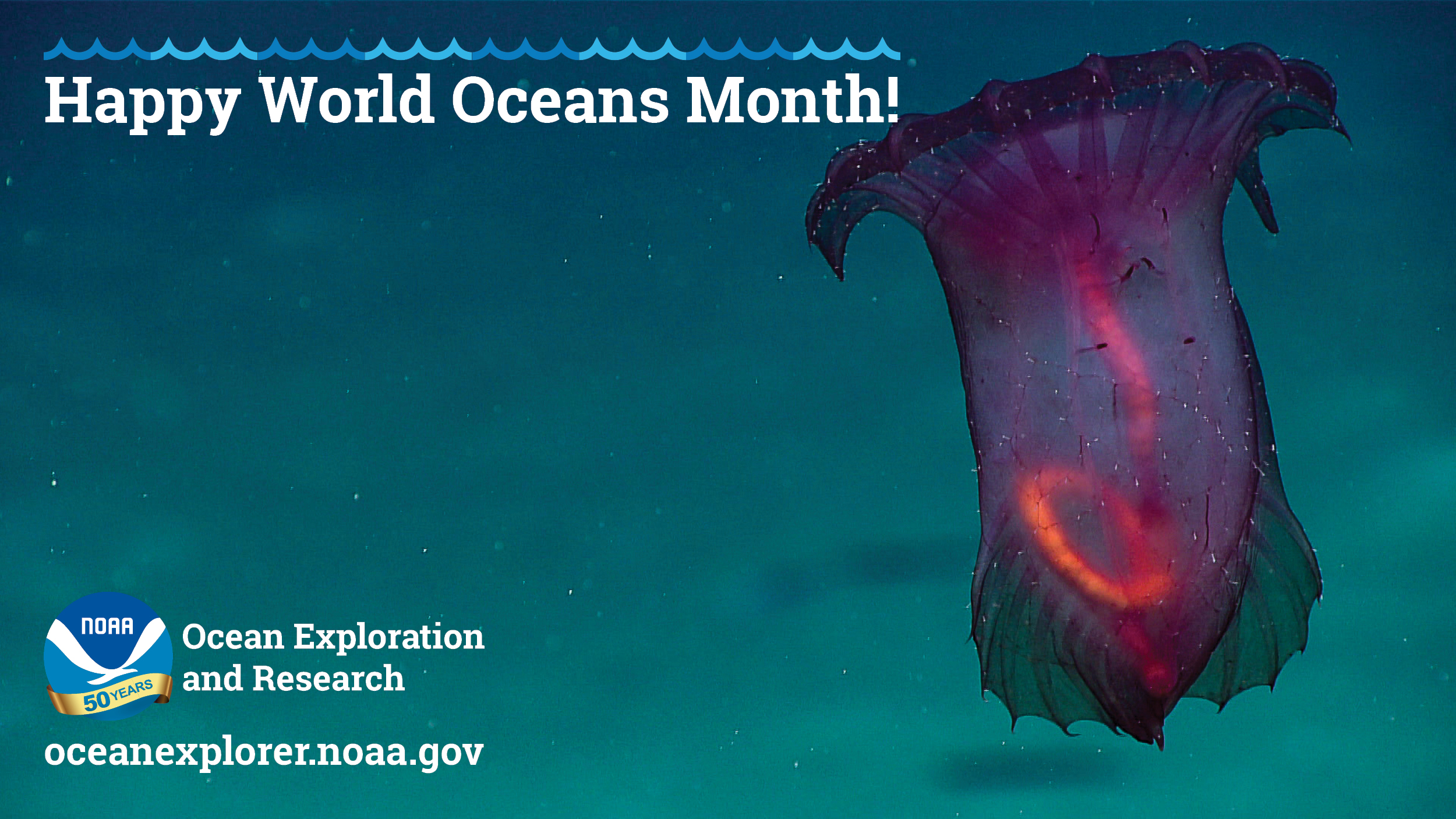
Ocean Life: Sea Cucumber
Common names for this bizarre sea cucumber (Enypniastes eximia) seen during the Gulf of Mexico 2017 expedition include Spanish dancer and headless chicken monster. These animals spend most of their time on the seafloor, feeding off surface sediments, but they can swim if they want to get somewhere more quickly or evade a predator. Image courtesy of the NOAA Office of Ocean Exploration and Research. Download the card (jpg, 2.0 MB).
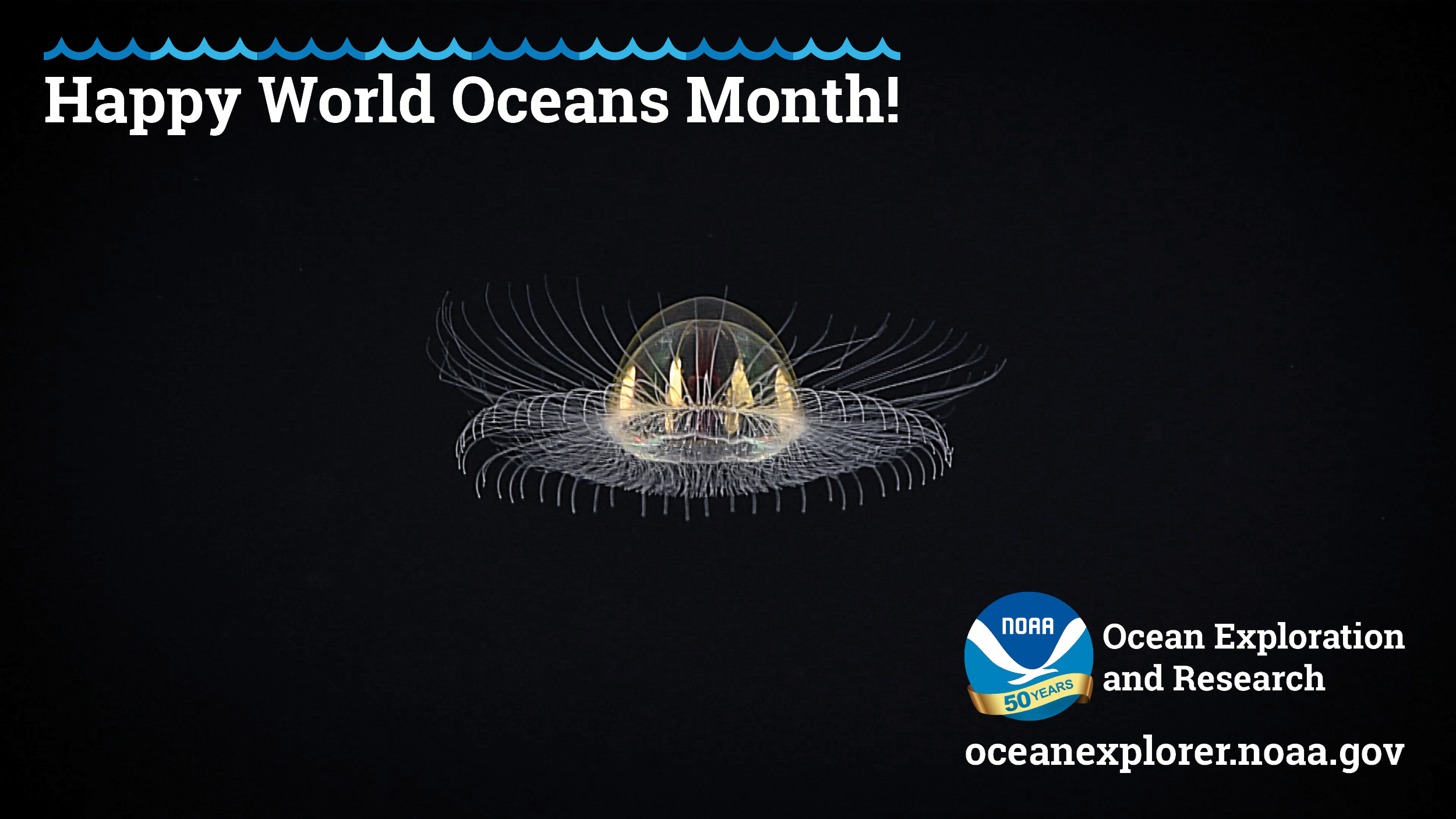
Water Column Mysteries: “Cosmic” Jellyfish
This "cosmic" jellyfish, in a family of hydromedusae called Rhopalonematidae, was imaged feeding in the midwater environment at ~3,000 meters (1.86 miles) during the second dive of the 2017 American Samoa Expedition: Suesuega o le Moana o Amerika Samoa expedition. Through observations such as this one, we can learn much about the animals in the midwater and what they are up to when we can catch them in an undisturbed manner. Image courtesy of the NOAA Office of Ocean Exploration and Research. Download the card (jpg, 1.1 MB).
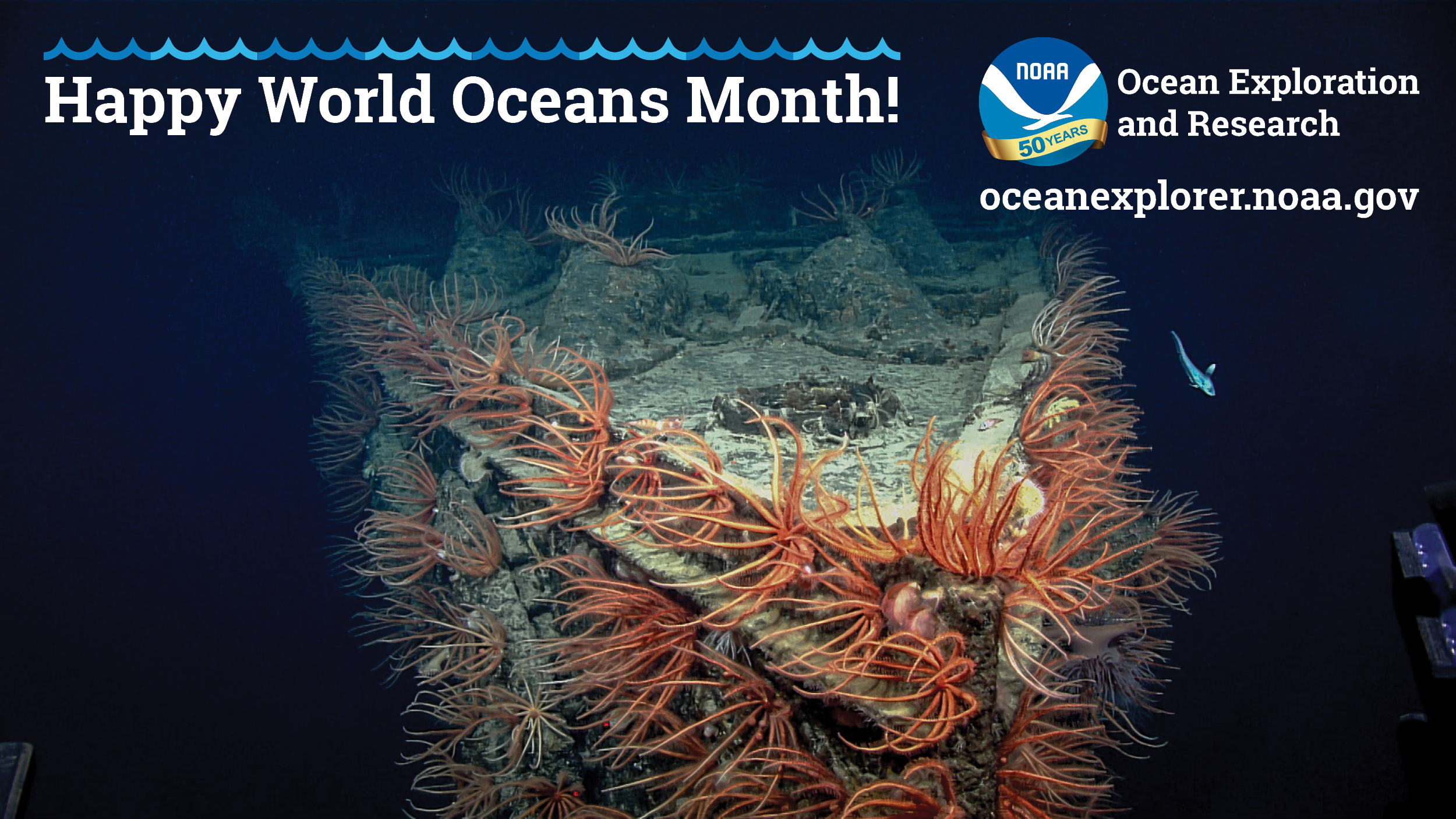
Marine Archaeology: USS Baltimore
Scuttled in 1944 off Oahu after serving in the Spanish-American War and World War I, the iron-hulled cruiser USS Baltimore was visited in 2017 during the Deep-Sea Symphony: Exploring the Musicians Seamounts expedition to better understand how shipwrecks deteriorate over time and the habitat they provide for marine animals. As shown here, the knife-edge bow stem of the ship was covered in brisingid sea stars and other deepwater fauna. Image courtesy of the NOAA Office of Ocean Exploration and Research. Download the card (jpg, 2.1 MB).
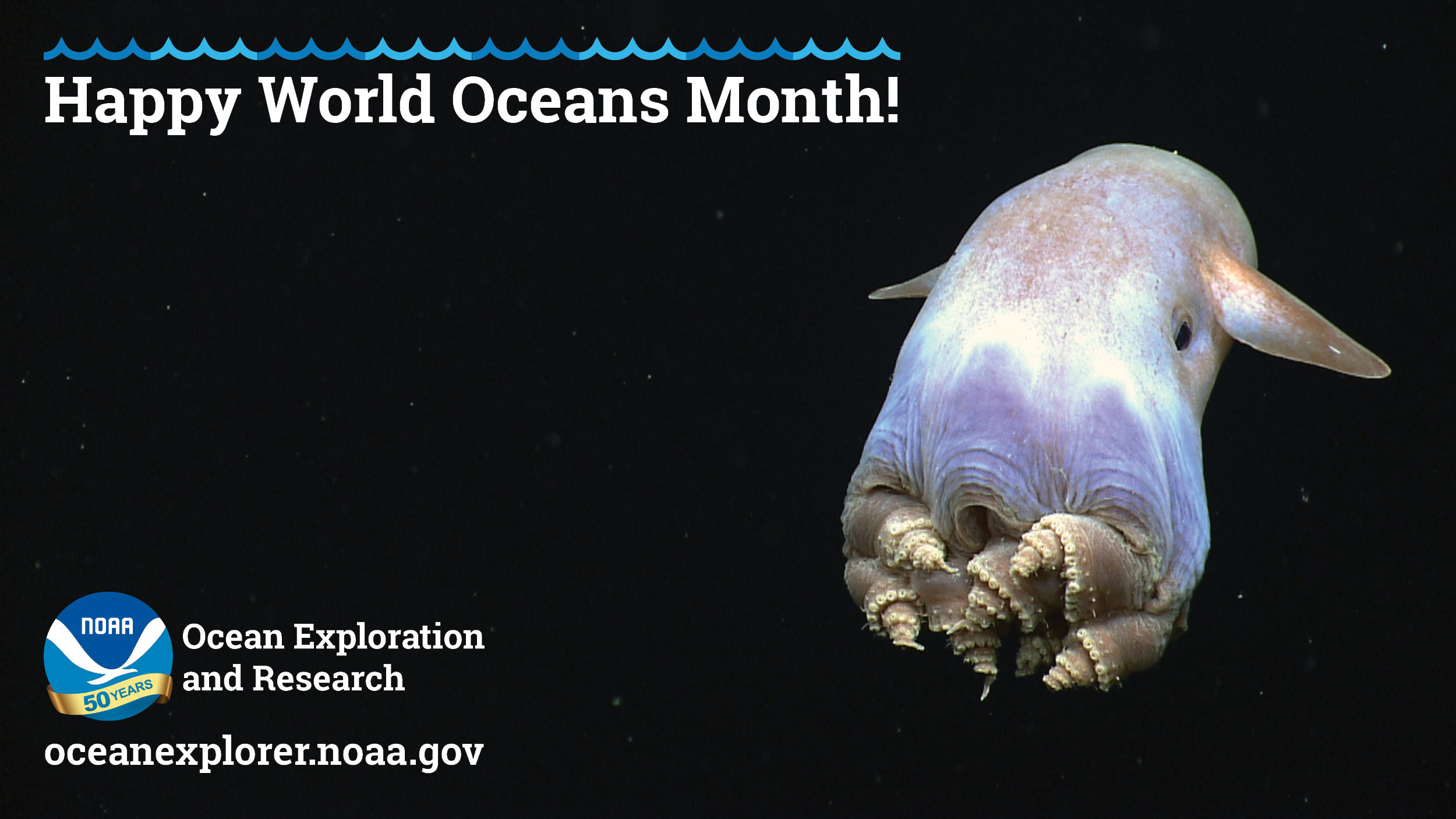
Unexpected Finds: Dumbo Octopus
This dumbo octopus was identified as the biology highlight of the Gulf of Mexico 2014 expedition by many participating scientists and viewers alike. In this image, it has coiled its arms into tight spirals. Although cirrate octopods have been observed doing a variety of postures with their arms, one had never been seen spiraling its arms like this. This is a good example of the fact that every time we get a chance to explore the deep sea, we find something new and unexpected. Image courtesy of the NOAA Office of Ocean Exploration and Research. Download the card (jpg, 1.5 MB).
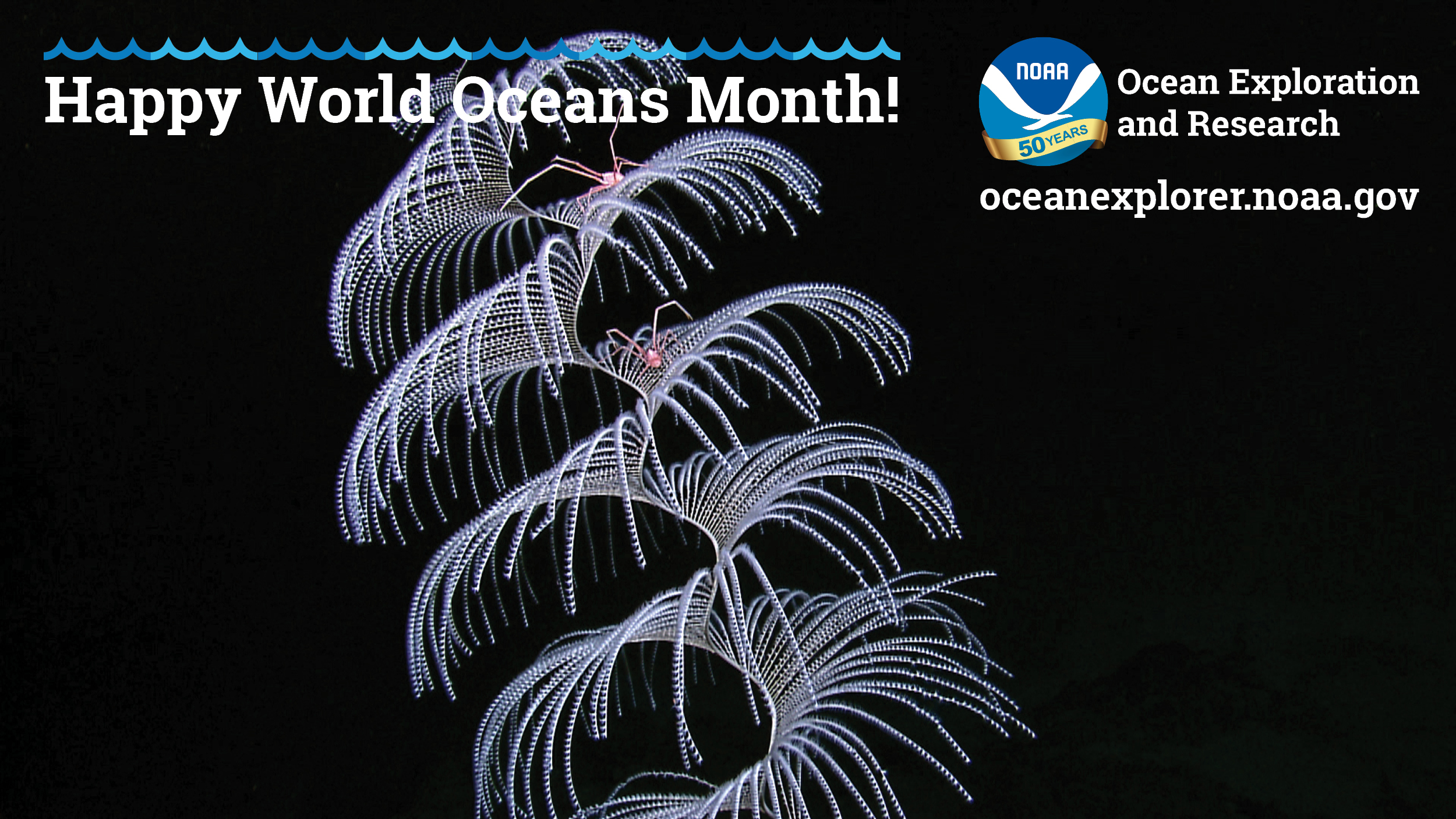
Exploring the Seafloor: Octocoral
This chrysogorgid octocoral, with its characteristic spiral form, belongs to the genus Iridigorgia. This stunning example was seen in the northwestern Gulf of Mexico during the Gulf of Mexico 2012 expedition. Note the squat lobsters delicately perched atop its branches. Characteristics that can help scientists identify the type of Iridigorgia include the distance between parts of the coil along the main axis and the shape of the polyps. Image courtesy of the NOAA Office of Ocean Exploration and Research. Download the card (jpg, 1.2 MB).
We Asked, You Answered
In April and May, the NOAA Office of Ocean Exploration and Research asked you, our fellow explorers, to choose your favorite photos from a selection of images in six categories from past Okeanos Explorer expeditions to help us tell our tales of ocean exploration and honor our ocean. Missed the photos the first time or just want to see them all again? Visit the Explorer's Choice Photo Contest Archive to see all the original contenders.
Want more? We’ve also added the winning photos to our wallpaper and virtual meeting background collections.